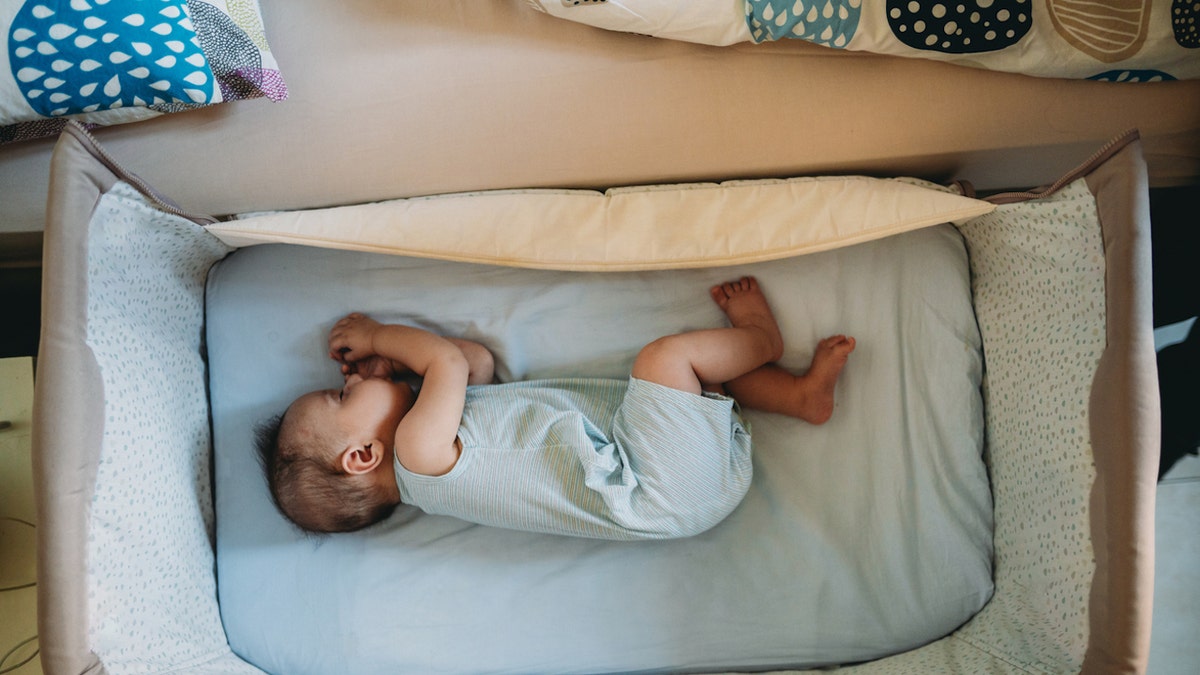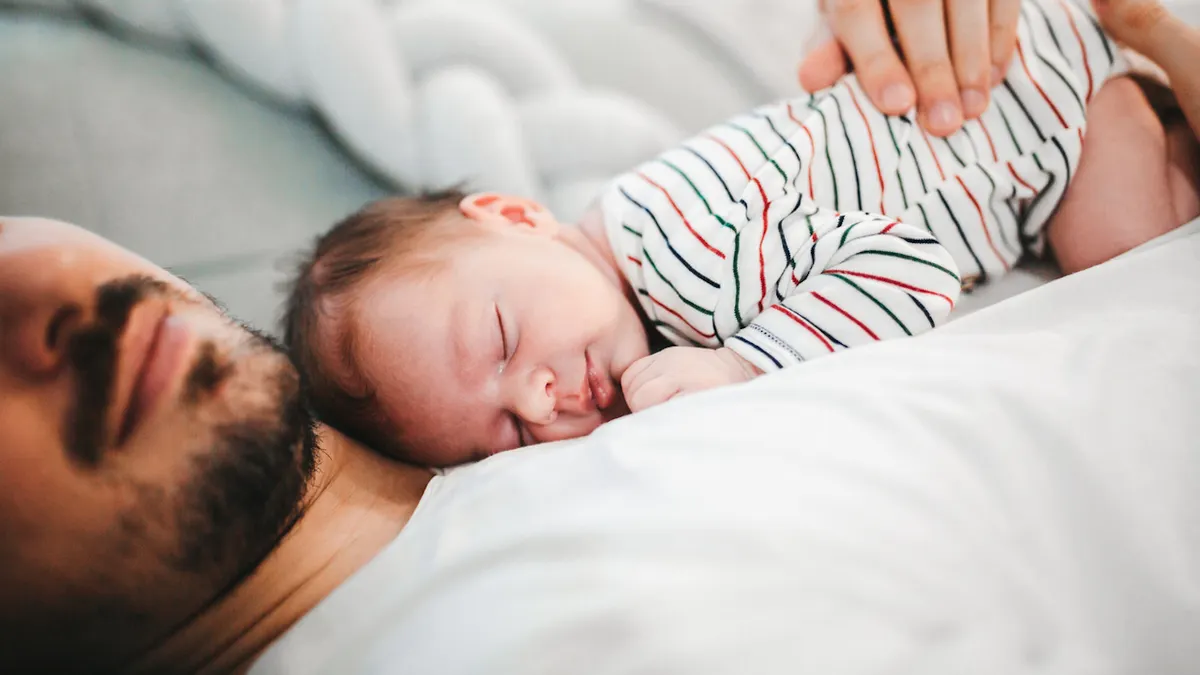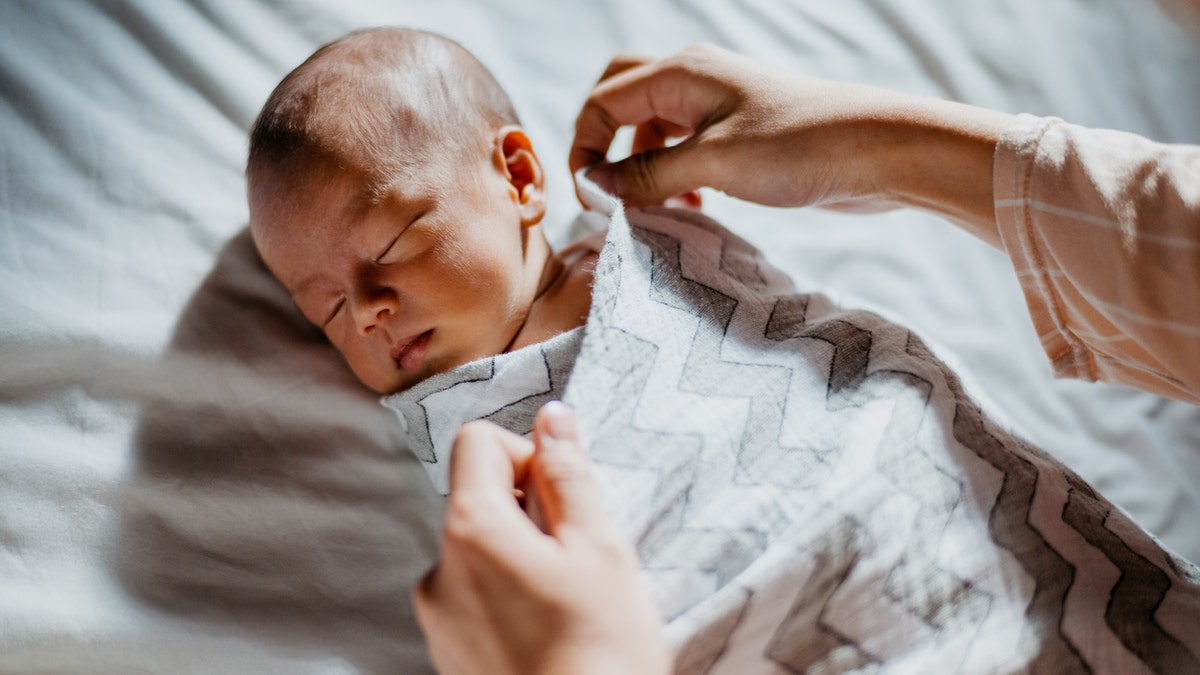[ad_1]
Allowing babies to sleep outside their cribs or dedicated solo sleep spaces can have life-threatening risks.
That’s according to a recent study by the Centers for Disease Control and Prevention (CDC), which was published in the medical journal Pediatrics.
Among infants who died suddenly, 59.5% were sleeping with someone else at the time.
Around 76% were sleeping in an adult bed and 68.2% were sharing a bed with an adult, the study found.
In 68.3% of the deaths, soft bedding was found in the sleeping area.
The researchers looked at more than 7,500 sudden unexpected infant deaths in 23 U.S. states between 2011 and 2020.

Allowing babies to sleep outside their cribs can have life-threatening risks, according to a recent study by the CDC. (iStock)
They evaluated the babies’ sleep environments, demographics and other characteristics.
Dr. Marc Siegel, clinical professor of medicine at NYU Langone Medical Center and a Fox News medical contributor, joined “Fox & Friends” this week to discuss the dangers associated with unsafe sleep habits.
SIDS BREAKTHROUGH? POSSIBLE SUDDEN INFANT DEATH SYNDROME BIOMARKER IDENTIFIED
While it may seem “natural” for a child to be in bed with a parent, especially among those who are new to parenting, these sleep arrangements can have tragic consequences, the doctor warned.
Of the 1,300 to 1,500 cases of SIDS (sudden infant death syndrome) each year, almost three-quarters of them were associated with a child sleeping in a bed with a parent, he pointed out.

Among the thousands of infants who died in 23 U.S. states between 2011 and 2020, nearly three-quarters of them were sharing a bed with an adult, the study found. (iStock)
“You know why? The surface isn’t firm enough,” he said.
“When you sleep, you have a mattress you want to feel comfortable with — but in the crib, [it should be] a very firm mattress,” he added.
“These are key issues — you don’t want to have your child sleeping on their stomach when they are very young.”

No loose blankets, pillows, stuffed animals, plush toys, crib bumpers or other soft items should be placed in the child’s sleep space, according to the American Academy of Pediatrics. (iStock)
Previous studies have shown that SIDS has something to do with the way the baby is exchanging oxygen and carbon dioxide, Siegel noted.
“It’s also related to what you do when you’re pregnant,” he said. “You don’t want to be smoking, you don’t want to be drinking alcohol. All of that increases the risk of SIDS.”
It’s safest for babies to sleep on their backs or sides until they are 1 year old, Siegel advised.
CLICK HERE TO SIGN UP FOR OUR HEALTH NEWSLETTER
The American Academy of Pediatrics (AAP) shared specific guidelines on its website to ensure safe sleeping for babies and young children.
Parents and caregivers should place infants on their backs for sleep in their own dedicated sleep space — a crib, bassinet or portable play yard with a firm, flat mattress and a fitted sheet — with no other people in that same space.

Parents and caregivers should place infants on their backs for sleep in their own dedicated sleep space, experts advise. (iStock)
Infants should not be put to sleep on a couch, an armchair, a swing or a car seat.
CLICK HERE TO GET THE FOX NEWS APP
No loose blankets, pillows, stuffed animals, plush toys, crib bumpers or other soft items should be placed in the child’s sleep space.
The AAP also recommends breastfeeding if possible and that parents should avoid smoking to reduce risk.
For more Health articles, visit www.foxnews.com/health.
[ad_2]
Source link






